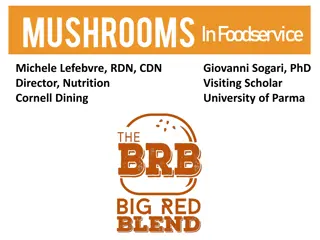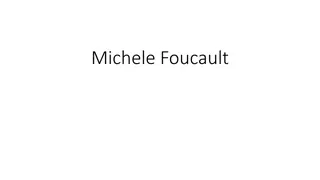
Analyzing Season Trends: Expected Goals, Actuals, and Differentials
Dive into a detailed analysis of season trends in hockey, exploring expected goals, actuals, differentials, and more. Discover if goals become harder to score later in the season and how teams perform based on expected goals.
Download Presentation

Please find below an Image/Link to download the presentation.
The content on the website is provided AS IS for your information and personal use only. It may not be sold, licensed, or shared on other websites without obtaining consent from the author. If you encounter any issues during the download, it is possible that the publisher has removed the file from their server.
You are allowed to download the files provided on this website for personal or commercial use, subject to the condition that they are used lawfully. All files are the property of their respective owners.
The content on the website is provided AS IS for your information and personal use only. It may not be sold, licensed, or shared on other websites without obtaining consent from the author.
E N D
Presentation Transcript
March 3rd, 2018 Emily Jo Michele Over 82. A Preliminary Look at 82-Game Trends with a Focus on Expected Goals
Are goals really more difficult to come by later in the season? 5-Game Rolling Averages | Goals & Penalties 10 9 8 Goals | Penalties 7 6 5 4 3 2 1 0 5 10 15 20 25 30 35 40 Game 45 50 55 60 65 70 75 80 Even Strenth Goals All Situations Goals Penalties
Overview Season Trends The 82-Game Season Topics: Are expected goals more difficult to come by later in the season? GF vs xGF Actuals vs Expected Differentials Percentage Differentials Team Trends Expected Goals What are expected goals? How do goals, expected goals, and their differentials fluxuate or trend?
Raw data was gathered from Emmanuel Perry via Alex Novet and Corsica.Hockey Sources & Methodology Data from 2007-08 season through 2015-16 Excluded data from Lockout Year All data used from this point forward is Even Strength Data Where appropriate, only home team data was used to avoid duplication or equal and opposite cancellation Five Game Rolling Averages were used for all charts so averages for games 1-4 are unavailable Where appropriate, slope equations of trend lines were used to assess a positive or negative trend
Are expected goals more difficult to come by later in the season? 5-Game Rolling Average | Even Strength Total Expected Goals per Game y = 0.0023x + 3.4156 6 5 4 Goals 3 2 1 0 5 10 15 20 25 30 35 40 Game 45 50 55 60 65 70 75 80
Is there a fluctuation in the differential between Actual and Expected goals throughout the season? 5-Game Rolling Average | Even Strength GF vs xGF y = 0.0001x + 1.0091 2 1.8 1.6 1.4 1.2 1 0.8 0.6 0.4 0.2 0 5 10 15 20 25 30 35 40 45 50 55 60 65 70 75 80 Rolling Differential Linear (Rolling Differential)
What about For Percentage differentials? 5-Game Rolling Average| Even Strength GF% vs xGF% y = -0.0003x + 0.2462 R = 0.3684 0.3 0.25 0.2 0.15 0.1 0.05 0 5 10 15 20 25 30 35 40 Game 45 50 55 60 65 70 75 80 GF vs xGF % Differential Trendline * - to avoid cancelling percentages, only the home team was used in the calculation of this differential.
Traps to Avoid These differentials do not imply one team is better or worse at the beginning or end of the season It characterizes how predictable a team is at a given point in the season based on xGF metrics These differentials don t indicate whether teams are under- or over- performing Further research would have to be performed to examine in what direction teams trend in matching their xGF percentages and why
Next Steps Analyze why the differential between goals for percentage and expected goals for percentage may decrease throughout a season Analyze similar trend on a team by team basis. Do all teams follow these trends? The 40s flux - what about this time of year seems to produce a bump or dip in the rolling average across examined metrics? GF vs xGF GF% vs xGF% xG
Special Thank You Alex Novet & all those involved in the Hockey Graphs Mentorship Program Corsica.Hockey
Thank you! In case this wasn t your thing, here s a picture of my dog. You can follow me on twitter @emilyjomichele.
Team by Team Trend in Differential between GF% & xGF% Increase, 6 ARI MIN NJ NYI OTT WSH Decrease, 19 ANA BOS BUF CAR CBJ CGY CHI DET EDM FLA LA MTL NSH NYR PHI SJ TOR VAN WPG (Close to) Even, 5 COL DAL PIT STL TB




















